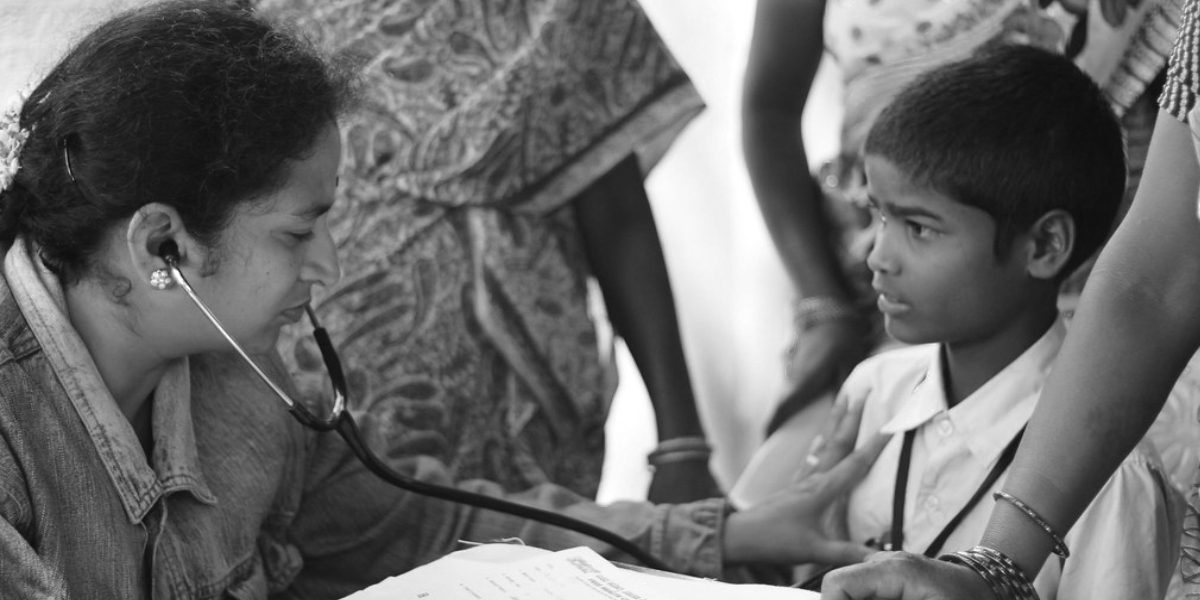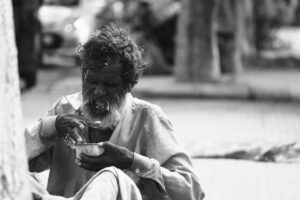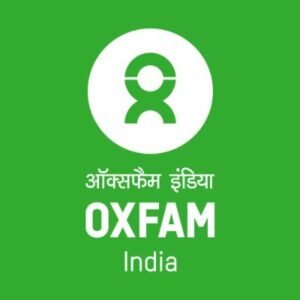Oxfam International said that taxing India’s top 10 billionaires at five percent will help cover the entire cost of Tribal healthcare for five years

The report mentioned that almost 42 percent of Tribal children in the country are malnourished. (Creative Commons)
A three percent tax on the total wealth of Indian billionaires can fund the National Health Mission, the largest healthcare scheme in India, according to Oxfam India’s latest report ‘Survival of the Richest: The India story’.
Releasing the India supplement of its annual inequality report on the first day of the World Economic Forum (WEF) annual meeting in Davos, rights group Oxfam International said that taxing India’s top 10 billionaires at five percent will help cover the entire cost of tribal healthcare for five years.
The report said that India is among the countries with the least public health spending. Government Health Expenditure (GHE) as a percentage of GDP stands at 2.1 percent, much below the policy benchmark of 2.5 percent and the global average of 6 percent.
A recent study showed that the life expectancy at birth was 65.1 years for the poorest fifth of households in India as compared with 72.7 years for the richest fifth of households. This constituted an absolute gap of 7.6 years and a relative gap of 11.7 percent, the Oxfam report said.
Even caste and life expectancy are intricately connected. The average Dalit woman dies 14.6 years earlier than a woman from a higher caste.
The life expectancy of the tribals in India is also approximately three years lesser than the non-tribal population.
Further, India needs massive investments in infrastructure. India has just five beds for 10,000 Indians.
The inequalities can be witnessed in the rural-urban divide as well. Only 31.5 percent of hospitals and 16 percent of hospital beds are situated in rural areas where 75 percent of total population resides.
Of the rural primary health centers, 21.8 percent do not have doctors, and the Community Health Centres (CHCs) without specialist doctors was at a whopping 67.96 percent in 2021.
The report further mentioned that almost 42 percent of tribal children in the country are malnourished. As per a government’s committee on tribal health in India, per capita expenditure on tribal healthcare should be increased to ₹2,447 in order to achieve the goals of the National Health Policy.
The out of pocket (OOP) expenditure for health increases the risk of vulnerable groups slipping into poverty because of catastrophic health expenditures, said the report.
Indians pay 63 percent of their medical expenses OOP, which is considered to be the highest in the world. A report by Brookings India based on National Sample Survey Organisation (NSSO) surveys claims that nearly 63 million, or seven percent, of India’s population is pushed into poverty every year due to healthcare expenses.
“OOP expenditure is primarily due to the lack of quality public healthcare services. Increasing public spending to 3 percent of the GDP can significantly bring down OOP expenditure to 30 percent of the overall healthcare spend,” said the report.
The richest one percent in India now own more than 40 percent of the country’s total wealth, while the bottom half of the population together share just three percent of the wealth.
“A one-off tax on unrealised gains from 2017 to 2021 on just one billionaire, Gautam Adani, could have raised ₹1.79 lakh crore, enough to employ more than five million Indian primary school teachers for a year,” it added.

The bottom half of the Indian population together share just three percent of the wealth. (Creative Commons)
The report said that if India’s billionaires are taxed once at 2 percent on their entire wealth, it would support the requirement of ₹40,423 crore for the nutrition of malnourished in the country for the next three years.
“A one-time tax of five percent on the 10 richest billionaires in the country (₹1.37 lakh crore) is more than 1.5 times the funds estimated by the Health and Family Welfare Ministry (₹86,200 crore) and the Ministry of Ayush (₹3,050 crore) for the year 2022-23,” it added.
On gender inequality, the report said that female workers earned only 63 paise for every 1 rupee a male worker earned.
For Scheduled Castes and rural workers, the difference is even starker — the former earned 55 percent of what the advantaged social groups earned, and the latter earned only half of the urban earnings between 2018 and 2019.
“Taxing the top 100 Indian billionaires at 2.5 percent, or taxing the top 10 Indian billionaires at 5 percent would nearly cover the entire amount required to bring the children back into school,” it added.
Oxfam said the report is a mix of qualitative and quantitative information to explore the impact of inequality in India.
Secondary sources like Forbes and Credit Suisse have been used to look at the wealth inequality and billionaire wealth in the country, while government sources like NSS, Union budget documents, parliamentary questions, etc have been used to corroborate arguments made through out the report.
Since the pandemic begun to Novemeber 2022, billionaires in India have seen their wealth surge by 121 percent or ₹3,608 crore per day in real terms, Oxfam said.
On the other hand, approximately 64 percent of the total ₹14.83 lakh crore in Goods and Services Tax (GST) came from bottom 50 percent of the population in 2021-22, with only 3 percent of GST coming from the top 10 per cent.
Oxfam said the total number of billionaires in India increased from 102 in 2020 to 166 in 2022.
The combined wealth of India’s 100 richest has touched USD 660 billion (₹54.12 lakh crore) — an amount that could fund the entire Union Budget for more than 18 months, it added.
Oxfam India CEO Amitabh Behar said, “The country’s marginalised Dalits, Adivasis, Muslims, women and informal sector workers are continuing to suffer in a system which ensures the survival of the richest.
“The poor are paying disproportionately higher taxes, spending more on essential items and services when compared to the rich. The time has come to tax the rich and ensure they pay their fair share.”
Behar urged the Union finance minister to implement progressive tax measures such as wealth tax and inheritance tax, which he said have been historically proven to be effective in tackling inequality.
Citing a nationwide survey by Fight Inequality Alliance India (FIA India) in 2021, Oxfam said it found that more than 80 per cent of people in India support tax on the rich and corporations who earned record profits during the Covid-19 pandemic.
“More than 90 percent of participants demanded budget measures to combat inequality such as universal social security, right to health and expansion of budget to prevent gender-based violence,” it added.

Oxfam India urged the Union finance minister to introduce one-off solidarity wealth taxes and windfall taxes to end crisis profiteering. (Creative Commons)
“It’s time we demolish the convenient myth that tax cuts for the richest result in their wealth somehow ‘trickling down’ to everyone else. Taxing the super-rich is the strategic precondition to reducing inequality and resuscitating democracy.
“We need to do this for innovation. For stronger public services and for happier and healthier societies,” said Gabriela Bucher, Executive Director of Oxfam International.
Oxfam India urged the Union finance minister to introduce one-off solidarity wealth taxes and windfall taxes to end crisis profiteering. It also demanded a permanent increase in taxes on the richest 1 per cent and especially raise taxes on capital gains, which are subject to lower tax rates than other forms of income.
Oxfam also called for inheritance, property, and land taxes, as well as net wealth taxes, while enhancing the budgetary allocation of the health sector to 2.5 per cent of GDP by 2025, as envisaged in the National Health Policy. Oxfam said it also wants public health systems to be strengthened and budgetary allocation for education to be enhanced to the global benchmark of 6 per cent of GDP.
“Ensure workers in the formal and informal sectors are paid basic minimum wages. The minimum wages should be at par with living wages which is essential for living a life with dignity,” it added.
(With inputs from PTI)

Jul 26, 2024

Jul 26, 2024

Jul 26, 2024

Jul 26, 2024

Jul 26, 2024

Jul 26, 2024